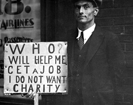
Gender and the Automobile in the United States
Placing Gender and Automobiles into Perspective
Gender is now fully recognized as a vibrant and important category of historical analysis, for the different circumstances of the sexes have made women and men experience and understand events in different ways. While early definitions and usage of gender frequently made the word synonymous with the relationship between the female and male sexes, with the examination of women and men as gendered persons, and with the discussion of the social construction of both femininity and femaleness and masculinity and manhood.
The study of the history of transportation, travel, and mobility has similarly undergone a shift in recent years. Traditionally dominated by historians’ fascination with railroads and the availability of railroad corporate archives, attention has turned to twentieth-century modes of passenger and freight movement, namely the automobile, the truck, the bus, and the airplane. These modes of motorized transport have offered major opportunities for understanding how and why Americans take not only mobility, but also rapid mobility, for granted. The internal combustion engine has transformed what would have been a major venture of travelling at a slow pace to the nearest large town or to some weekend holiday retreat, into an everyday occurrence. In particular, the automobile has revolutionized personal lifestyles and has become a basic and indispensable part of being an American.
Although historians of twentieth-century transport and travel have made some progress in identifying and examining the automobile’s growing impact on American life, the majority of their findings have remained production oriented and male-dominated. Written primarily by men for a male audience, and focusing on industrial production, technology, and machinery, their work explained more about moving assembly lines, corporate management, technological improvements, and even labor relations than they did about the automobile as a machine for changing lifestyles and interpersonal relationships. The new histories that emerged in the 1960s and 1970s, however, emphasized the importance of anonymous Americans and the automobile’s cultural influence and impact. From this work, gender has emerged as a major tool of social, economic, and cultural analysis.
Most of the gendered approaches to understanding the importance and the role of the automobile have focused on the years before World War II. Although the vehicle had been mass-produced in the second decade of the century, it was only popularly consumed in the 1920s, primarily by the middle classes. At the start of the 1930s, only one in 5.5 Americans owned either a new or a second-hand car, and although Americans did not give up their autos during the Depression of the 1930s, there were fewer opportunities for new consumers to buy into personal motor mobility. Historical perceptions about gendered responses to and use of the automobile have thus been shaped by the one-car-per-family mindset and the belief that women and men still conformed to the Victorian “cult of domesticity.” American intervention in World War II can be considered a turning point, although origins of new trends are visible prior to 1941. The war years liberated women from restrictive home ties, albeit on a partial or temporary basis, but then the feminist movement of the 1960s and 1970s promoted the belief in the equality of the sexes. More importantly, defense spending during the war and then government spending after the war stimulated a major economic boom from 1948 to 1973. Affluence underwrote mass consumerism, and automobiles were at the top of most families’ shopping lists. Aspiring families aimed to own two cars, and the modern American lifestyle, based on mass personal automobility, regardless of sex, was born. It was everyone’s right to drive a car.
<<Previous Section - Next Section>>
Placing Gender and Automobiles into Perspective
Gender and Automobility: The Pioneering and Early Years
Gender and Automobility: Consumerism and the Great Economic Boom
Gender and Automobility: Sexual Equality in Modern Times
About the Project | Credits | Contact Us | Student & Teacher Resources | Site Map
©2004 Automobile in American Life and Society
